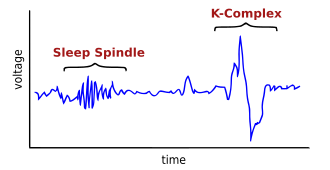Introduction:
Human cognition is characterized by its extreme flexibility, such as the ability to integrate already memorized events into new contexts and thus to form abstract thoughts, such as analogies and inferences.
When an animal moves in its environment, the individual hippocampal neurons are active when the animal occupies specific regions or specific situations. Crossing a given environment leads to the sequential activation of a series of these neuronal cells.
During sleep or awake rest, the hippocampal neural circuits replay spatial experiences (the situations with which the brain is confronted) on several levels in the form of action potentials organized in sharp waves and ripples.

Some context
These cellular activation sequences, which can be observed via an EEG, are similar to sequences which had occurred during activity, but their replay is done on a much faster timescale. This rereading can be done in the same order but also in reverse.
The phenomenon has been mainly observed in the hippocampus, a region of the brain associated with memory and space navigation. The first study to explore this phenomenon was carried out in 1989. It showed that the neuronal activity of cells during sleep resembled activity during the awake state. Subsequent studies have shown that other groups of cells also demonstrate this same type of increased activity during sleep.
There are three main patterns of oscillation in the hippocampus: theta waves, sharp waves and ripples and gamma waves. Gamma oscillations are found in all major brain structures, while theta and sharp waves and ripples are specific to the hippocampus and its neighboring regions. Sharp waves and ripples are composed of large amplitude waves and associated rapid oscillations.

Altered gamma activity has been observed in many mood and cognitive disorders such as Alzheimer's disease, epilepsy, and schizophrenia.
Sharp waves and ripples and associated wavelets have been observed in the brains of many mammals, mice, rats, rabbits, monkeys and humans. In all these species, it has been shown that these waves are mainly involved in the consolidation of recently acquired memories.
The characteristics of these oscillations provide indications of their role in the consolidation of memory. Certain direct indications concerning their role come from studies on the effects of their removal. Animal studies have thus indicated that the exhaustion of the wavelet by electrical stimulation, hinders the formation of new memories in the rat.
What was studied:
To study these problems, the authors of the article examined the temporal organization of events on an event-to-event basis during locomotion and awake immobility in male Long-Evans rats. They learned to perform a task where they have to use their memory.
The data were obtained from a network of independent mobile tetrodes, targeting the CA1 and CA3 areas of the hippocampus. There are four regions named CA in the hippocampus, after the initials of Cornu Ammonis, an earlier name for the hippocampus. A tetrode is a type of electrode used in neuroscience to analyze extracellular action potentials.
Scientists recount that action potential events of varying frequency could represent similar spatial experiences and, surprisingly, that variability increases rather than decreases as the environment becomes more familiar, perhaps because that the complexity of these is better understood.
The wide time range that is punctuating these wavelets events, is apparent in new environments where sharp waves and ripples are very widespread and is even increased in more familiar environments. On the other hand, no change of this type was present for the action potentials associated with locomotion.
The great variability in the temporal organization of sharp waves and ripples linked to situations rather than movements, suggests that this higher variability serves a function.
Conclusion:
Humans have the ability to remember past experiences with varying degrees of specificity, and it is possible that this degree of specificity corresponds physiologically to different timings in repetition of groups of action potentials.
The analyzes narrated in this article suggest that a similar spatial experience can be replayed in different temporal configurations of groups of action potentials. This variability is increased in more familiar environments.
The authors therefore hypothesize that the variability of the temporal organization of the hippocampus leads to a mechanism for recovering the experiences memorized with various degrees of specificity.

